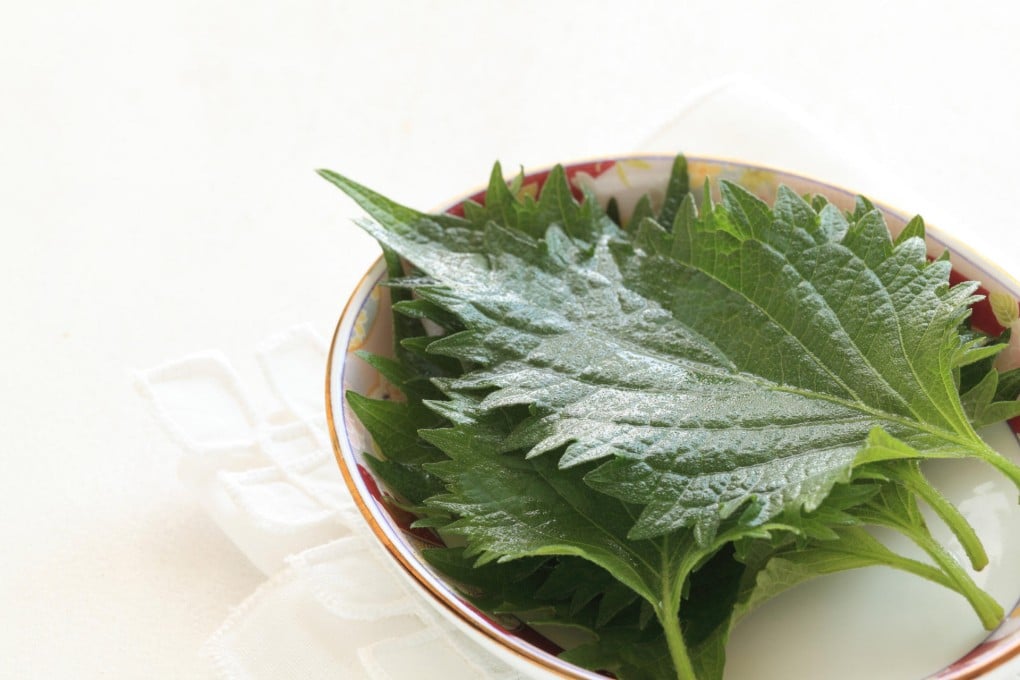
Jagged little perilla Most of us associate the sharp, distinctive flavour of perilla frutescens with Japanese and Korean cuisines. The green or red leaves go by many names, including shiso, beefsteak leaf, sesame leaf, wild sesame and kkaennip (with spelling variations). There are also several cultivars but, with all of them, the leaves are broad, the edges jagged and the flavours similar. The plant's tiny, beautiful flowers are also used, mostly as a garnish.
In Japan, green perilla leaves and the plant's purple or white flowers are used to decorate sashimi platters. The green leaves are sometimes used when making high-end tempura; ingredients such as uni or shirako (male "roe") are wrapped in them before being dipped in batter and fried. They're also used in daifuku (mochi confections), where the fresh leaf is wrapped around the mochi and sweet stuffing (usually mashed red bean), to add fragrance and make the dessert seem less heavy.
In Korea, perilla is served alongside lettuce and other soft leaves on vegetable platters, and is used to wrap up meat and other savoury items. It also makes a delicious kimchi.
I hadn't considered perilla to be an ingredient in Chinese cuisine, but a friend reminded me that the dried leaves are given out when you buy hairy crabs to cook at home: you drape the perilla over the crabs before steaming them. And recently I ate a delicious and unusual dish of roasted suckling pig skin with foie gras and crunchy rice cracker served with shiso leaf.
